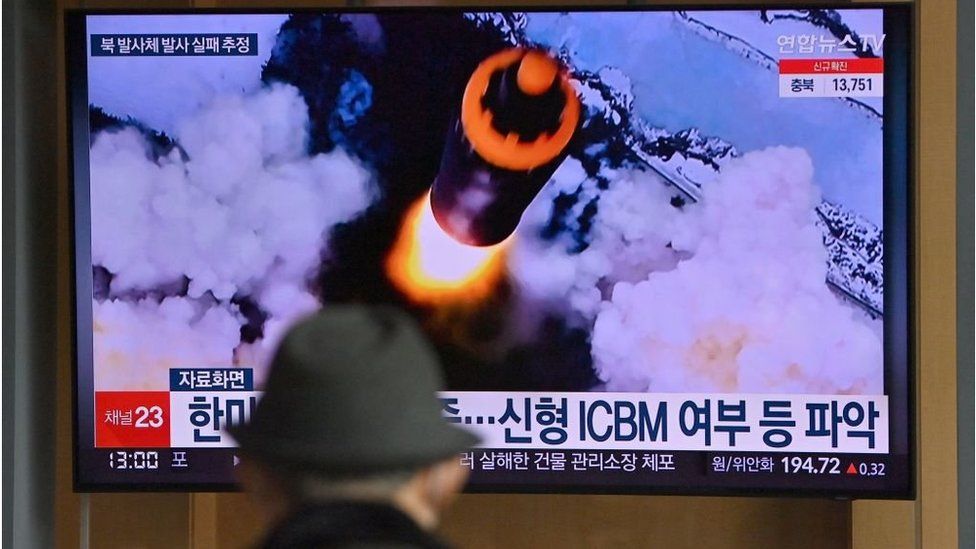290
North Korea has tested a banned intercontinental ballistic missile (ICBM) for the first time since 2017, South Korea and Japan say.
Japanese officials said it flew 1,100 km (684 miles) and fell in Japanese waters after flying for over an hour.
ICBMs, designed for nuclear arms delivery, could extend North Korea’s strike range as far as the US mainland.
The test is being seen as a major escalation by the North and has been condemned by its neighbours and the US.
North Korea has launched a flurry of missile tests in recent weeks.
The US and South Korea have said some of those tests, which Pyongyang claimed were satellite launches, were in fact trials of parts of an ICBM system.
Thursday’s missile appeared to be newer and more powerful than the one North Korea fired five years ago, reaching an altitude of more than 6,000km (3,730 miles), according to Japanese officials.
South Korea’s military responded with five missile tests of its own, from land, sea and air. The United States condemned the North for a “brazen violation” of UN Security Council resolutions.
“The door has not closed on diplomacy, but Pyongyang must immediately cease its destabilising actions,” White House spokeswoman Jen Psaki said.
Outgoing South Korean President Moon Jae-in condemned what he said was a “breach of the suspension of intercontinental ballistic missile launches promised by Chairman Kim Jong-un to the international community”.
The United States and South Korea had warned in recent weeks that North Korea may be preparing to test-fire an ICBM at full range for the first time since 2017.
On 16 March, North Korea launched a suspected missile that appeared to explode shortly after lift-off over Pyongyang, South Korea’s military said.
The UN prohibits North Korea from ballistic and nuclear weapons tests, and has imposed strict sanctions after previous tests.
In 2017 North Korea carried out a number of ICBM tests, the last of which involved a Hwasong-15 missile that reached an altitude of 4,500km (2,800 miles).
Experts estimated the Hwasong-15 could have travelled more than 13,000km (8,080 miles) if it had been fired on a standard trajectory, which meant it could reach any part of the continental United States.
The latest launch is thought to be the North’s largest ever ICBM test, and involved an even more powerful missile, possibly the new Hwasong-17 unveiled in 2020 but untested up to now.
In 2018 Kim Jong-un put in place a moratorium on long-range ballistic missile and nuclear tests, following talks with then US President Donald Trump.
But in 2020, Mr Kim announced he was no longer bound by this promise.
Thursday’s launch also comes as satellite images showed North Korea firing up activity at its nuclear testing facility in Punggye-ri earlier this month, stoking fears that the North would resume testing nuclear weapons and long-range missiles.
The facility, located in the north-east of the country, had been blown up in 2018 after Mr Kim promised to halt all nuclear tests.
BBC


